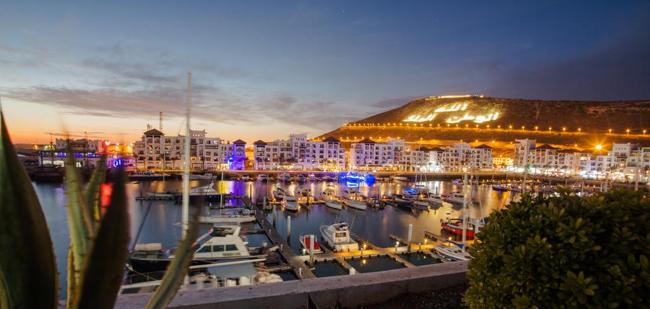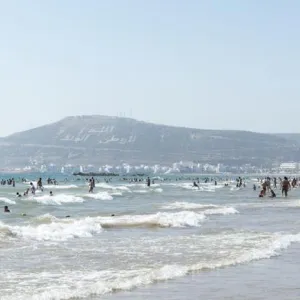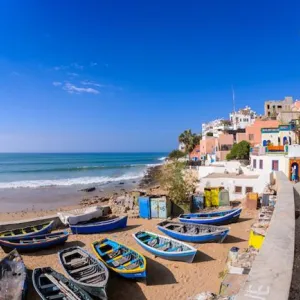Agadir: Sun, Surf, and Serenity on Morocco's Atlantic Coast
Agadir in Morocco is located along North Africa’s Atlantic coastline. Its cultural and historical ties lie predominantly with its relationships and conflicts with European nations. Before we find out why it has been internationally coined the “Miami of Morocco,” let’s look at its past as one of Africa’s most significant trading ports.
Interested in the gold trade taking place between the sub Sahara and the north in the 1500s, Portuguese settlers built one of their first colonies known as Santa Cruz de Aguer. They profited from traders who made their way north into Fez or south towards Timbuktu along the trans-Saharan trade route.
Once scattered, Berber Souss tribes of Morocco were unified under the command of a Saadian ruler named Mohammed El Mehdi, a royal and holy family of the Draa Valley. They wanted to rid Agadir of Christian intruders. The Berbers’ aggressive onslaught eventually caused the complete withdrawal of the Portuguese from Morocco’s central coast.
Agadir, which was already making its mark as a significant port with the exportation of gold, spices, dyes, olive oil, and even rare wood products, profited greatly from additional mineral exports of lead, magnesium, and unrefined metals.
Agadir’s popularity grew over the next centuries. Germany began looking towards Agadir as not only a vacation spot boasting 300+ days of sunshine a year, but as an entry point into African trading markets. Just before World War I, in 1911, Germany sent a warship to Morocco to ‘protect their interests’ in the port. France quickly reacted and established a protectorate over the country, never claiming it as a full-fledged colony.
The French brought much of their infrastructural genius to Morocco. And once again, Agadir reclaimed its status as an important international port. Since 1913, in the 1930s and throughout the 1950s, the French worked to enhance the port’s function, export capabilities, and large-scale fishing endeavors.
After the French left Morocco in the mid-50’s, a massive earthquake struck Agadir in 1961. Over 15,000 people were killed. Left crumbled was much of the city’s historical heritage: its buildings, mosques, and other significant cultural structures. Germany saw this as an opportune time to step in and offer aid to the fallen city. It was quickly rebuilt, in true Germanic form, as a luxury getaway spot and starting point for travel excursions into the Sahara Desert and nearby villages including Taroudant, Tiznit, Tafraout and wind-swept Essouira.
The modern day, somewhat posh Agadir offers endless mid- to high-class accommodations and a plethora of outdoor activities. One can enjoy days on end of golf, sailing, tennis, horseback riding, and not to mention surfing; including windsurfing and kite surfing.
Places to Stay in Agadir
Agadir offers a range of accommodations to suit every budget:
- Sofitel Agadir Royal Bay Resort: A luxurious 5-star resort with ocean views and a world-class spa.
- Riu Palace Tikida Agadir: An all-inclusive resort featuring multiple pools and fine dining.
- Hotel Timoulay & Spa Agadir: A charming boutique hotel with great amenities.
- Taghazout Riads: Perfect for those looking for an authentic experience in the nearby surfing village.
Things to Do in Agadir
Agadir is packed with activities for every type of traveler:
- Beach Relaxation: Enjoy the golden sands of Agadir Beach and soak in the sunshine.
- Surfing: Head to Taghazout for some of the best waves in Morocco.
- Camel Rides: Experience the charm of riding a camel along the coast at sunset.
- Hiking & Nature: Explore the stunning landscapes of the Anti-Atlas mountains.
- Shopping: Browse the vibrant stalls at Souk El Had.
- Marina Nightlife: Dine at upscale restaurants, enjoy live music, and experience Moroccan nightlife.










